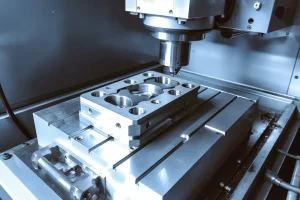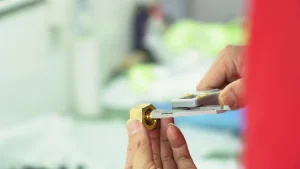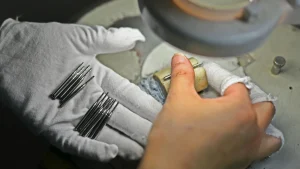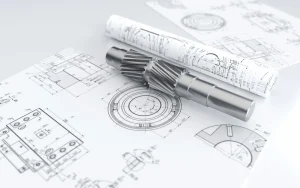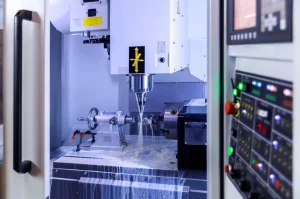The workflow of precision CNC machining generally includes design programming, preparation, manufacturing, quality inspection and subsequent processing, as follows:
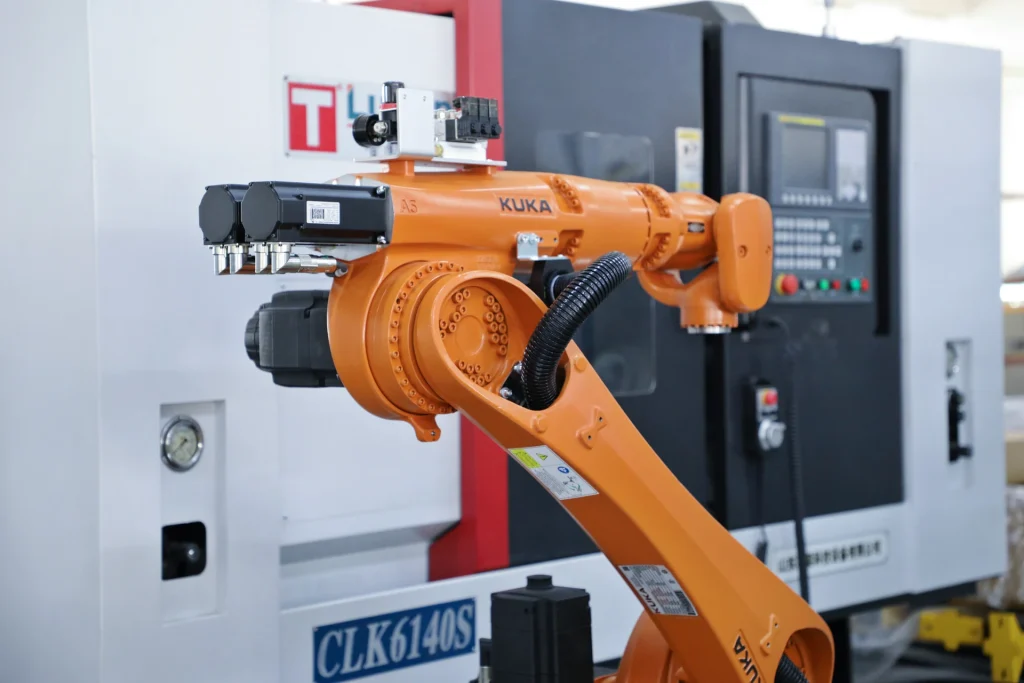
Design and Programming
Product Design: According to customer needs or actual application scenarios, use computer-aided design (CAD) software to create a three-dimensional model of the product, and clarify the product’s shape, size, precision requirements and other details.
Process Planning: Process personnel determine the processing route based on the product’s three-dimensional model and technical requirements, including selecting appropriate processing equipment, tools, fixtures, and formulating cutting parameters such as cutting speed, feed rate, cutting depth, etc., while considering the processing sequence and process arrangement to ensure efficient and high-quality completion of the processing task.
CNC Programming: Programmers use computer-aided manufacturing (CAM) software to convert the product’s three-dimensional model into a CNC processing program according to the process plan, that is, generate tool path data, and perform simulated processing to check whether the tool path is correct, whether there are interference, collision and other problems, and optimize and adjust the program to improve processing efficiency and quality.
Preparation
Equipment and tool preparation: According to the processing task, select appropriate precision CNC processing equipment, debug and inspect the equipment, and ensure that the equipment is in good operating condition. According to the process requirements, select suitable tools, such as milling cutters, drill bits, boring cutters, etc., and install and align the tools to determine the position of the tools in the machine tool coordinate system.
Fixture installation and workpiece clamping: Select a suitable fixture to fix the workpiece to ensure that the workpiece does not move or deform during processing. Install the fixture on the machine tool workbench and maintain the correct relative position between the fixture and the machine tool coordinate axis through operations such as alignment. Then, clamp the workpiece to be processed on the fixture to ensure that the clamping position of the workpiece is accurate and convenient for the tool to process.
Material preparation: According to the product design requirements, select suitable raw materials and check whether the specifications, dimensions, hardness, etc. of the materials meet the requirements. Perform necessary pretreatment on the raw materials, such as cutting, forging, heat treatment, etc., to improve the processing performance of the materials and prepare for subsequent precision processing.
Processing and manufacturing
Program transmission and startup: The written CNC program is transmitted to the control system of the CNC processing equipment through data cables, memory cards, etc. After confirming that the program is correct, the operator enters the necessary parameters on the machine tool operation panel, such as the workpiece zero point, tool compensation value, etc., and then starts the machine tool and starts processing.
Process monitoring: During the processing, the operator should closely observe the operating status of the machine tool, including the cutting condition of the tool, the surface quality of the workpiece, the sound and vibration of the machine tool, etc. Through the machine tool monitoring system, the changes in cutting parameters and tool wear can be viewed in real time. If there is any abnormality, the machine should be stopped in time for adjustment or processing.
Tool replacement and compensation: When the tool is worn to a certain extent or needs to be processed in different processes, the tool needs to be replaced in time. After replacing the tool, the tool setting operation should be re-performed, and the tool compensation parameters should be adjusted according to the actual size and wear of the tool to ensure the processing accuracy.
Quality inspection
Online inspection: During the processing, some precision CNC processing equipment has online inspection functions, such as real-time measurement of the size and shape of the workpiece through the probe installed on the machine tool, and the measurement results are compared with the programming data to find the processing error in time and make corrections to ensure the processing accuracy of the workpiece.
Offline inspection: After processing, the workpiece is removed from the machine tool, and the workpiece is comprehensively inspected for various dimensions, shape accuracy, position accuracy, etc. using three-dimensional coordinate measuring instruments, measuring tools and other inspection equipment. The inspection results are compared in detail with the product design requirements to determine whether the workpiece is qualified. For unqualified workpieces, the reasons are analyzed and corresponding measures are taken to improve them, such as reprocessing and adjusting processing parameters.
Subsequent processing
Surface treatment: According to the use requirements of the product, the surface treatment of the processed workpiece is carried out, such as electroplating, oxidation, spraying, etc., to improve the corrosion resistance, wear resistance, aesthetics and other properties of the workpiece.
Packaging and warehousing: The qualified workpieces that have undergone quality inspection and surface treatment are cleaned, blown dry, etc. to remove impurities such as oil stains and chips on the surface of the workpiece. Then, according to customer requirements or product characteristics, the workpiece is packaged, such as using plastic bags, paper boxes, wooden boxes and other packaging materials to ensure that the workpiece is not damaged during transportation and storage. Finally, the packaged workpiece is stored in the warehouse and waits for shipment.

